Discover 20 hidden attractions, cool sights, and unusual things to do in Cyprus. Don't miss out on these must-see attractions: Tombs of the Kings (Paphos), Paphos Archaeological Park (Paphos) or Kolossi Castle (Limassol).
Below, you can find the list of the most amazing places you should visit in Cyprus.
Table of Contents
Tombs of the Kings, Paphos
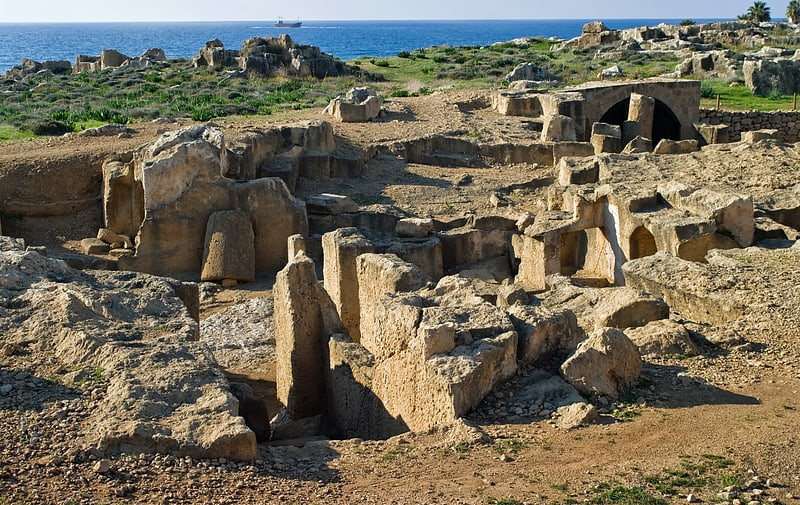
Large, ancient necropolis with tombs. The Tombs of the Kings is a large necropolis lying about two kilometres north of Paphos harbour in Cyprus. In 1980, it was designated a UNESCO World Heritage Site along with Paphos and Kouklia.
The underground tombs, many of which date back to the 4th century BC, are carved out of solid rock, and are thought to have been the burial sites of Paphitic aristocrats and high officials up to the third century AD (the name comes from the magnificence of the tombs; no kings were in fact buried here). Some of the tombs feature Doric columns and frescoed walls. Archaeological excavations are still being carried out at the site. The tombs are cut into the native rock, and at times imitated the houses of the living.
The tombs have been known and casually explored for centuries. The oldest modern account was written by Richard Pockocke, in 1783. Almost a century later, in 1870 the first archaeological excavations were conducted by Luigi Palma di Cesnola, the Italian-born American consul to Cyprus. In 1915 the first excavations under scientific supervision took place, led by Menelaos Markides, who was the curator of the Cyprus Museum. Systematic excavations took place in the late 1970s and the 1980s under the direction of Dr Sophocles Hadjisavvas, former Director of Antiquities of the Republic of Cyprus.
Dr Hadjisavvas is preparating the finds for publication with assistance from the Australian archaeological mission to Paphos.
Part of the importance of the tombs lies in the Paphian habit of including Rhodian amphorae among the offerings in a burial. Through the manufacturing stamps placed on the handles of these amphorae, it is possible to give them a date and, through them, the other material from the same burial.
Thus, it is hoped to develop a more secure chronology for archaeological material in the Eastern Mediterranean of the Hellenistic and early Roman periods.
It is reported that much of the information related to the tombs was lost over time. Several factors contributed to that: It is believed that many of the tombs were rich in expensive grave goods, despite that very few of such goods were to found by the official archaeological missions, and thus it is believed that grave robbers of the past were responsible. Also, the tombs’ proximity to the sea side hindered the preservation of the buried bodies. Despite those obstacles, the historical significance of the Tombs is well established among experts and locals.[1]
Address: Tombs of the Kings Ave, 8840 Πάφος
Paphos Archaeological Park, Paphos
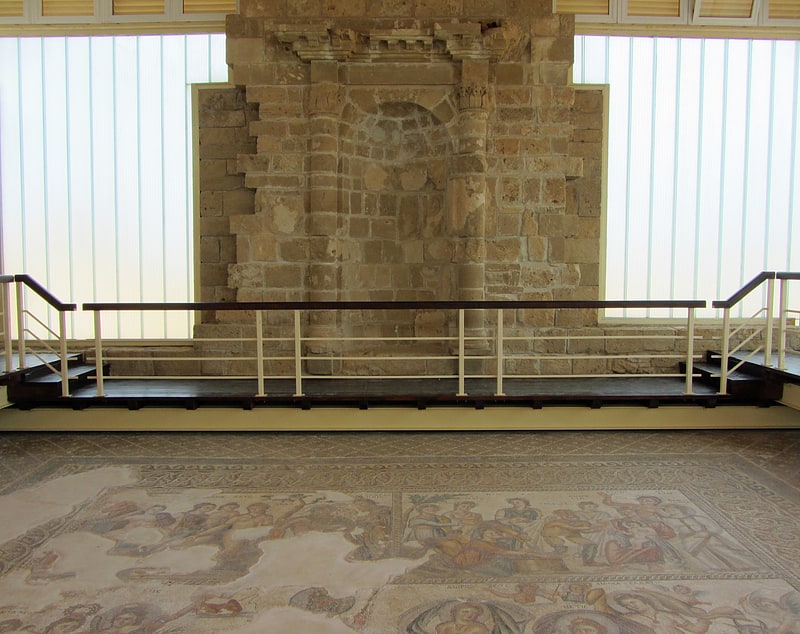
Archaeological site in Paphos, Cyprus. Paphos Archaeological Park contains the major part of the important ancient Greek and Roman city and is located in Paphos, southwest Cyprus. The park, still under excavation, is within the Nea Pafos section of the coastal city.
Its sites and monuments date from prehistoric times through the Middle Ages. Among the most significant remains so far discovered are four large and elaborate Roman villas: the House of Dionysos, the House of Aion, the House of Theseus and the House of Orpheus, all with superb preserved mosaic floors, especially an Orpheus mosaic. In addition, excavations have uncovered an agora, asklipieion, basilica, odeion, and Hellenistic-Roman theatre, and a necropolis known as the "Tombs of the Kings".
Nea Paphos is one of the three components forming the Paphos archaeological complex inscribed on the UNESCO World Heritage List in 1980 for its outstanding mosaics and ancient remains, as well as its historical religious importance.[2]
Kolossi Castle, Limassol

Also known as: Κάστρο Κολοσσίου
Medieval fortified castle with a view. Kolossi Castle is a former Crusader stronghold on the south-west edge of Kolossi village 14 kilometres west of the city of Limassol on the island of Cyprus. It held great strategic importance in the Middle Ages, and contained large facilities for the production of sugar from the local sugarcane, one of Cyprus's main exports in the period. The original castle was possibly built in 1210 by the Frankish military, when the land of Kolossi was given by King Hugh I to the Knights of the Order of St John of Jerusalem.
The present castle was built in 1454 by the Hospitallers under the Commander of Kolossi, Louis de Magnac, whose coat-of-arms can be seen carved into the castle's walls.
Owing to rivalry among the factions in the Crusader Kingdom of Cyprus, the castle was taken by the Knights Templar in 1306, but returned to the Hospitallers in 1313 following the abolition of the Templars.
The castle today consists of a single three-storey keep with an attached rectangular enclosure or bailey about 30 by 40 metres (98 by 131 ft).
As well as for its sugar, the area is also known for its sweet wine, Commandaria. At the wedding banquet after King Richard the Lionheart's marriage to Berengaria of Navarre at nearby Limassol, he allegedly declared it to be the "wine of kings and the king of wines." It has been produced in the region for millennia, and is thought to be the oldest continually-produced and named wine in the world, known for centuries as "Commandaria" after the Templars' Grand Commandery there.[3]
Address: Λεωφ. Αρχιεπισκόπου Μακαρίου Γ', Limassol
Saranta Kolones, Paphos
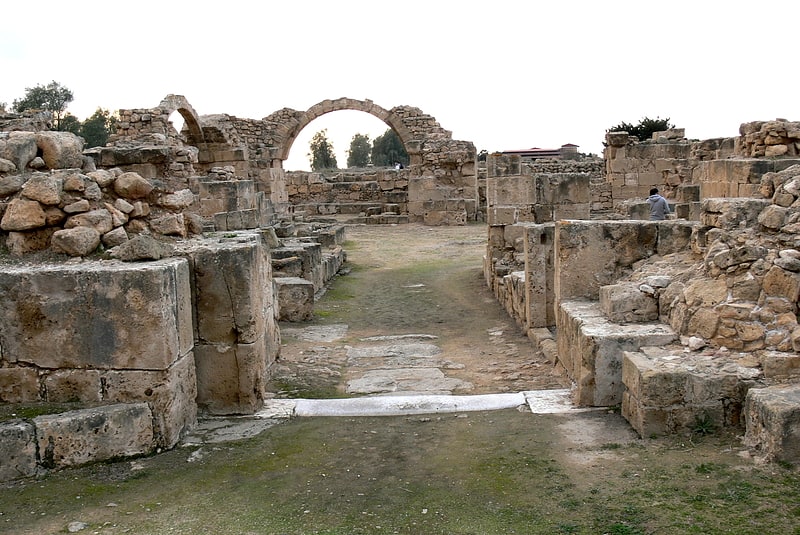
Historical landmark in Paphos, Cyprus. Saranta Kolones is a ruined medieval fortress inside the Paphos Archaeological Park and it is located just north of the harbour of Paphos, on the island of Cyprus. It takes its name from the large number of granite columns that were found on the site and probably once formed part of the ancient agora. The Byzantine castle is believed to have been built at the end of the 7th century AD to protect the port and the city of Nea Pafos from Arab raids and later remodeled by the Lusignans. The Fortress had a three-metre thick wall with four huge corner towers and another four intermediary towers along the joining walls and moat surrounding the castle. Access was across a wooden bridge spanning the moat. The square courtyard measured 35 metres long by 35 metres wide, with a tower at each corner. The main entrance was through a fifth, horseshoe-shaped tower on the east side. Destroyed by an earthquake in 1222, the castle was subsequently abandoned. In modern times a series of excavations have taken place.[4]
Kourion, Limassol

Also known as: Κούριο
City. Kourion was an important ancient Greek city-state on the southwestern coast of Cyprus. In the twelfth century BCE, after the collapse of the Mycenaean palaces, Greek settlers from Argos arrived on this site.
In the seventeenth century, Kourion suffered from five heavy earthquakes, but the city was partly rebuilt. The acropolis of Kourion, located 1.3 km southwest of Episkopi and 13 km west of Limassol, is located atop a limestone promontory nearly 100 metres high along the coast of Episkopi Bay.
The Kourion archaeological area lies within the British Overseas Territory of Akrotiri and Dhekelia and is managed by the Cyprus Department of Antiquity.[5]
Lala Mustafa Pasha Mosque, Famagusta
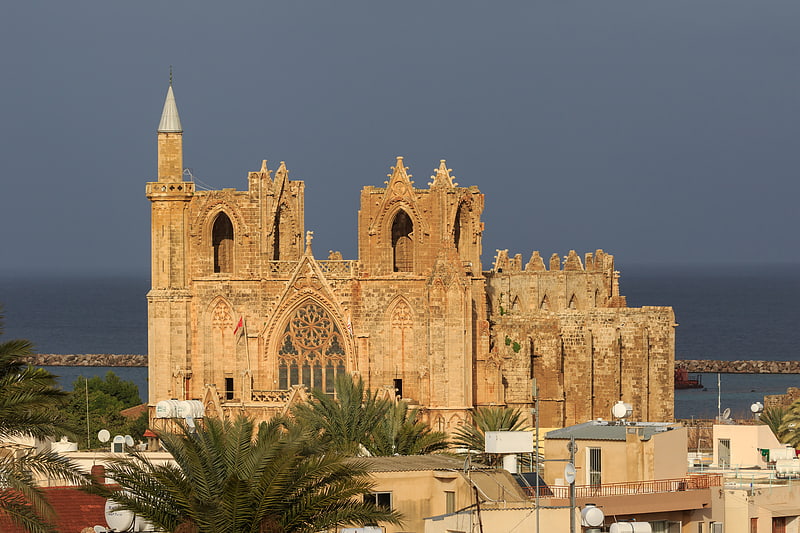
Also known as: Τέμενος Λαλά Μουσταφά Πασά
Famed mosque with medieval architecture. The Lala Mustafa Pasha Mosque, originally known as the Cathedral of Saint Nicholas and later as the Saint Sophia Mosque of Mağusa, is the largest medieval building in Famagusta, Cyprus. Built between 1298 and c. 1400, it was consecrated as a Catholic cathedral in 1328. The cathedral was converted into a mosque after the Ottoman Empire captured Famagusta in 1571 and it remains a mosque to this day. From 1954 the building has taken its name from Lala Mustafa Pasha, the Grand Vizier of the Ottoman Empire from Sokolovići in Bosnia, who served Murat III and led Ottoman forces against the Venetians in Cyprus.[6]
Address: Mahmut Celaleddin Sokak, Famagusta
Pierides Museum, Larnaca
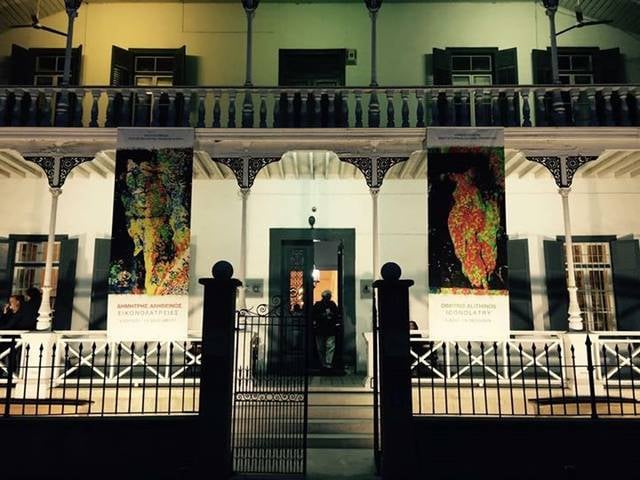
The Pierides Museum is a museum in Larnaca, Cyprus that was founded by the Pierides Foundation. It is the nation's oldest private museum.
The placard on the museum building says (as of 2013) "Perides Museum - Bank of Cyprus Cultural Foundation". The collection was initiated by Demetrios Pierides, in the 19th century (1811 - 1895), with the aim of protecting and preserving Cyprus' antiquities and preventing the loss of the island's history.
The collections were built by five generations of the family. The archaeological collection is housed in the old residence of the Pierides family, a colonial style building, built in 1825. The exhibits beginning from the Neolithic times through the Bronze Age, Geometric, Archaic, Hellenistic, Roman and Byzantine - Medieval ages.
There is also a cartography collection of old maps and charts of Cyprus and the Eastern Mediterranean as well as a collection of Greek and Roman glassware.
Currently the museum is managed by Peter Ashdjian, an 8th generation Pierides.[7]
Address: Zinonos Kitieos 4, 6023 Larnaca
St. Sophia Cathedral, Nicosia

Also known as: Τέμενος Σελιμιγιέ Λευκωσίας
Mosque housed in a onetime Gothic church. Selimiye Mosque, historically known as Cathedral of Saint Sophia or Ayasofya Mosque, is a former Christian cathedral converted into a mosque, located in North Nicosia. It has historically been the main mosque of the city. The Selimiye Mosque is housed in the largest and oldest surviving Gothic church in Cyprus possibly constructed on the site of an earlier Byzantine church.
In total, the mosque has a capacity to hold 2500 worshipers with 1750 m2 available for worship. It is the largest surviving historical building in Nicosia, and according to sources, it "may have been the largest church built in the Eastern Mediterranean in the millennium between the rise of Islam and the late Ottoman period". It was the coronation church of the kings of Cyprus.[8]
Address: Kirlizade Sk, Nicosia
Büyük Han, Nicosia
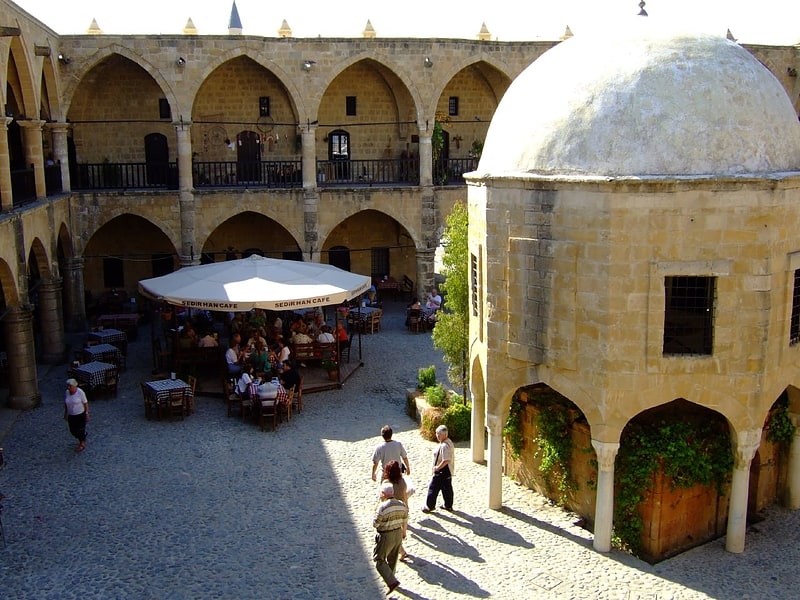
Also known as: Μπουγιούκ Χαν
Shopping area in a historic building. Büyük Han is the largest caravansarai on the island of Cyprus and is considered to be one of the finest buildings on the island. Located in the capital of Cyprus, it was built by the Ottomans in 1572, the year after they had seized Cyprus from the Venetians. In the centre of the open courtyard is a mosque with a fountain for pre-prayer ablutions. It became the first city prison under British administration. After spending most of the 1990s being restored, the inn has been revived as a thriving arts centre, consisting of several galleries and workshops. There are also several courtyard cafes and souvenir shops.[9]
Address: Arasta Sok., Nicosia
Hala Sultan Tekke, Larnaca
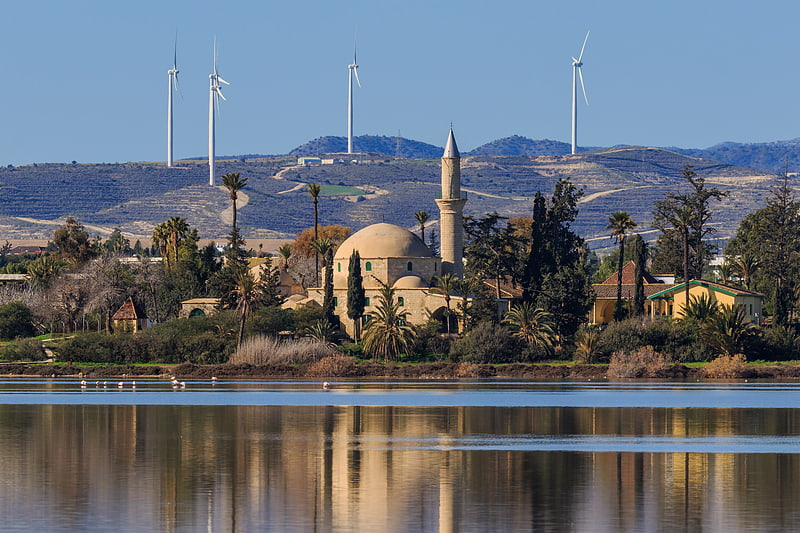
Also known as: Τεκές Χαλά Σουλτάνας
Prominent mosque in a lush setting. Hala Sultan Tekke or the Mosque of Umm Haram is a mosque and tekke complex on the west bank of Larnaca Salt Lake, in Larnaca, Cyprus. Umm Haram was the wife of Ubada bin al-Samit, a companion of the Islamic prophet Muhammad, and foster sister of Muhammad’s mother, Aminah bint Wahb.
Hala Sultan Tekke complex is composed of a mosque, mausoleum, minaret, cemetery, and living quarters for men and women. The term tekke (convent) applies to a building designed specifically for gatherings of a Sufi brotherhood, or tariqa, and may have referred to an earlier feature of the location. The present-day complex, open to all and not belonging to a single religious movement, lies in a serene setting on the shores of the Larnaca Salt Lake, which appears to be an important site also in prehistory. Hala Sultan Tekke is a listed Ancient Monument.[10]
Address: Tekke Road, Larnaca
Famagusta Gate, Nicosia

Cultural center in Nicosia, Cyprus. The Famagusta Gate is a gate in the Nicosia walls, Cyprus. It is the chief gate of the city: the Porta Giuliana, or "di sotto" of Fra Stefano Lusignano's " Chorograffia", known as Famagusta Gate in modern times. This construction, in the Venetian style has been copied from the famous Lazaretto Gate of Candia designed by Michael Sammicheli at the beginning of the 16th century, and consists of a vaulted passage through the earthwork rampart of the city with a carefully executed spherical dome, eleven metres in diameter, in its centre. The passageway is large enough for two vehicles to pass, and it is lighted by a circular opening in the centre of the dome in the style of the Pantheon, Rome. On either side of this passage appear to be entrances into chambers now blocked up. The external doorway of the Porta Giuliana is a small archway in the re-entering angle or "orecchione" of the Caraffa bastion now somewhat injured by breakage of the arch stones, and the ancient doors, etc. are missing. On the inner side of the gateway, facing the town, is an imposing facade.[11]
Address: Leoforos Athinas, Nicosia
St. Hilarion, Kyrenia
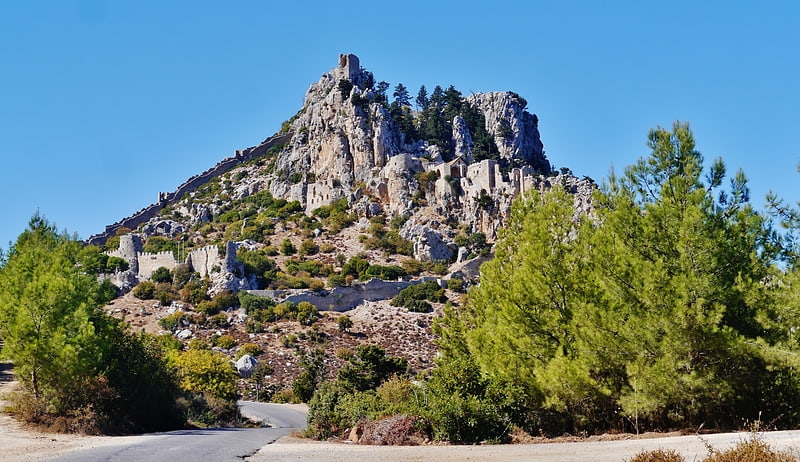
Also known as: Κάστρο του Αγίου Ιλαρίωνα
Castle in Northern Cyprus. The Saint Hilarion Castle lies on the Kyrenia mountain range, in Cyprus. This location provided the castle with command of the pass road from Kyrenia to Nicosia. It is the best preserved ruin of the three former strongholds in the Kyrenia mountains, the other two being Kantara and Buffavento.[12]
Address: Nicosia road, Kyrenia
Limassol Castle, Limassol
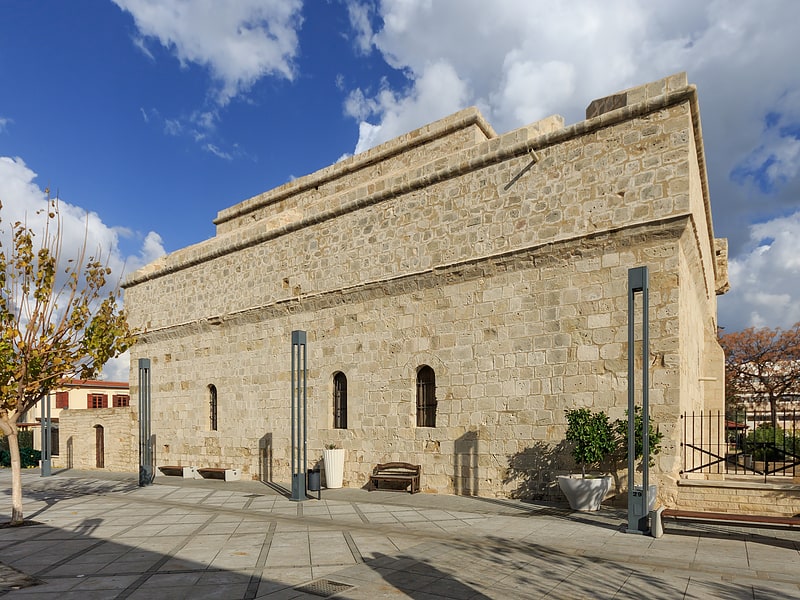
Also known as: Κάστρο της Λεμεσού
Castle in Limassol, Cyprus. The medieval Limassol Castle is situated near the old harbour in the heart of the historical centre of the city of Limassol. The castle as it appears today is a structure rebuilt circa 1590 under the period of Ottoman rule.
Archaeological investigation within the castle revealed that it was built over an Early Christian basilica (4–7th century CE) and a Middle Byzantine monument (10th–11th century CE). Other finds beneath the Castle witness the existence of an important church, possibly the city's first cathedral.
According to Etienne Lusignan, the original castle was erected by Guy de Lusignan in 1193. The first official reference to the fort dates to 1228, during the involvement of Frederic II of Germany in the affairs of Cyprus. From its erection until the beginning of the 16th century, damages were caused by the continuous attacks of the town by the Genoese and the Mameluks as well as by earthquakes alternating with restorations and reconstructions.
In 1538 the Ottomans captured Limassol and the castle. The Venetian governor of Cyprus, after recapturing the castle, decided to demolish it in order to avoid its possible seizure. This destruction was completed in 1567–68. After the Ottoman acquisition of Cyprus in 1576, the remains or parts of the remains of the castle were incorporated in the new Ottoman fort, completed in 1590, which was considerably strengthened. The underground chamber and the first floor were transformed into prison cells and remained in use until 1950.
According to tradition, this is where Richard the Lionheart married Berengaria of Navarre and crowned her Queen of England in 1191.[13]
Address: Queen Berengaria St, Limassol
Kyrenia Castle, Kyrenia
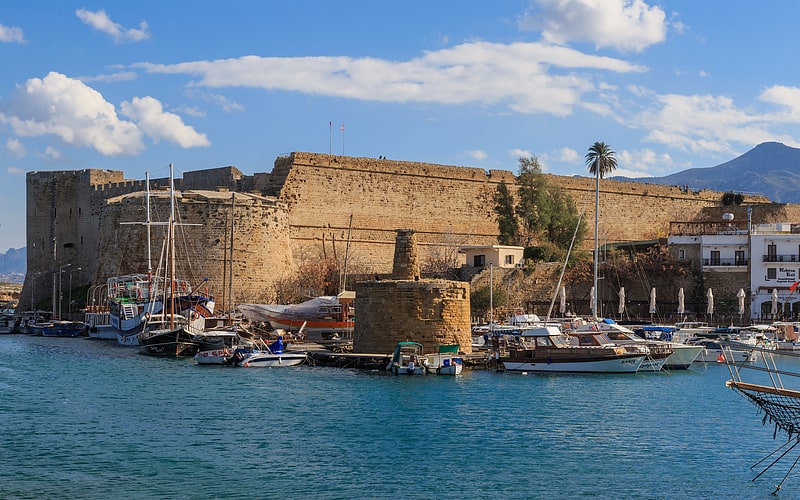
Also known as: Κάστρο της Κερύνειας
Ancient castle with 4th-century BCE ship. Kyrenia Castle, at the east end of the old harbour in Kyrenia is a 16th-century castle built by the Venetians over a previous Crusader fortification. Within its walls lies a twelfth-century chapel showing reused late Roman capitals, and the Shipwreck Museum.[14]
Address: Kordon Boyu Cd, Kyrenia
Larnaca District Archaeological Museum, Larnaca
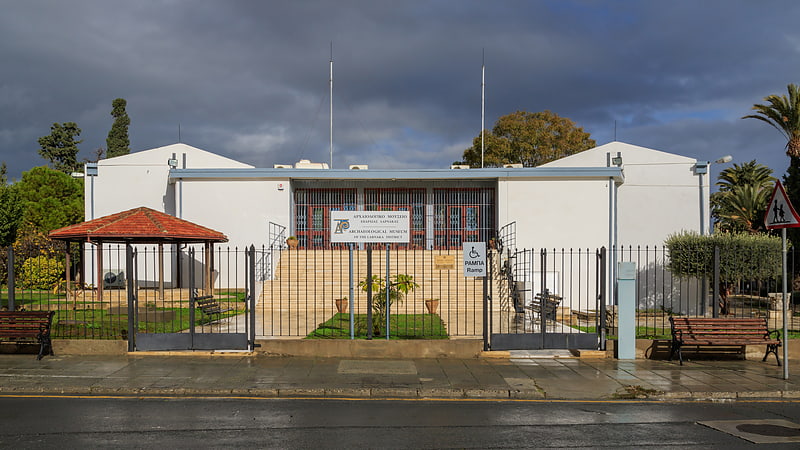
Larnaca District Museum is a museum in Larnaca, Cyprus that has displays that show the "historical development of the city of Kition and the District of Larnaka in general." It was inaugurated in 1969. and was formerly named Larnaca District Archaeological Museum. It is controlled by the Department of Antiquities.
The Kition-Bamboula archaeological site at is located around 100 meters north of the museum. Information about the site is posted on the grounds of the museum. The entrance fee at the museum is €1.70 —there is no separate charge for viewing the Bamboula site.
The Kition-Kathari site is located around 500 meters further north.[15]
Address: Kalogreon Sq., Larnaca
Buffavento Castle, Kyrenia

Also known as: Βουφαβέντο
Castle in Northern Cyprus. Buffavento Castle is a castle in Northern Cyprus. The exact date of its construction remains unknown, the most plausible theory being the Byzantine period. It combines Byzantine and Frankish architectural elements. It fell into disuse in the 14th century.[16]
Address: Buffavento Mountain, Kyrenia
Othello Castle, Famagusta
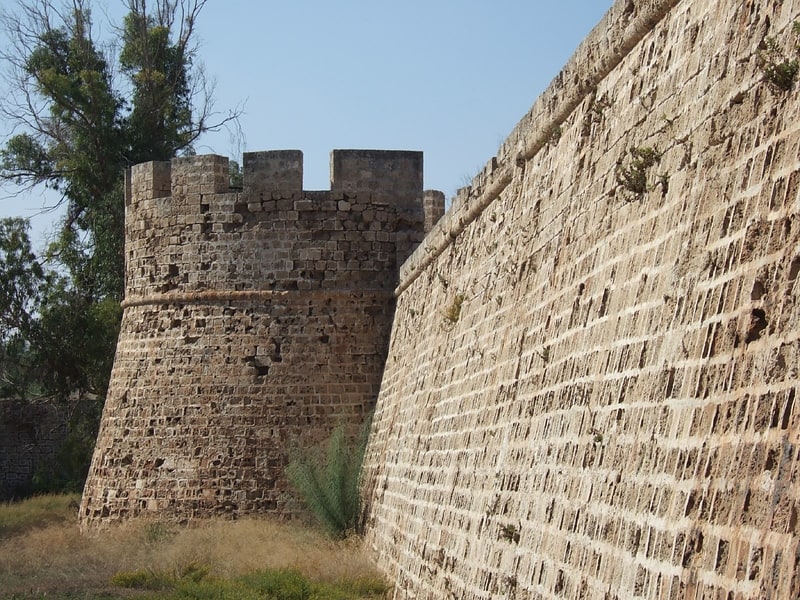
Also known as: Κάστρο της Αμμοχώστου
Historic 14th-century fortress. Othello Castle, also known as Othello's Tower, is a castle in Famagusta, Cyprus. It was built by the Lusignans in the 14th century, and was later modified by the Venetians. The modern name of the castle comes from a stage note in Shakespeare's play Othello.[17]
Nestorian Church, Famagusta
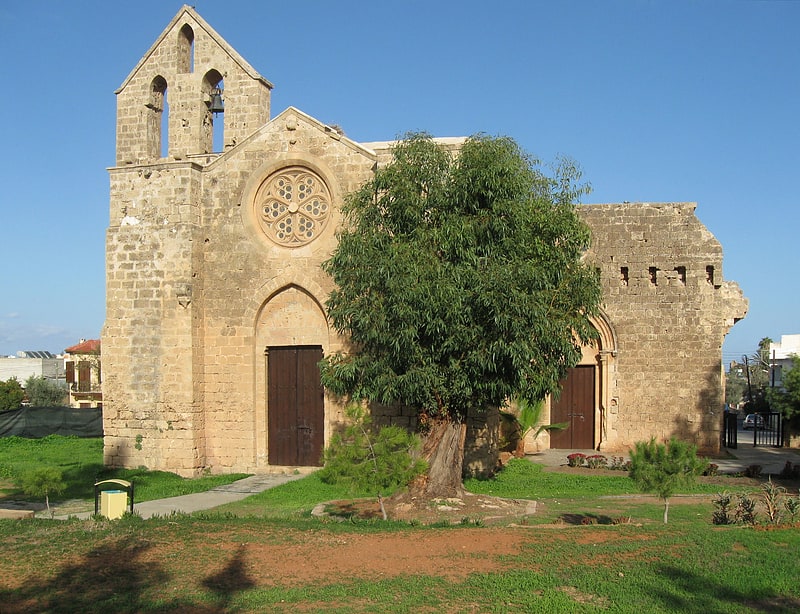
The Nestorian Church, officially known as the Church of St. George the Exiler is a church in the old town of Famagusta, Cyprus. Originally built as a church belonging to the Church of the East, an ancient nestorian branch of Eastern Christianity, it was converted to a Greek Orthodox Church in the British era after centuries of use as a stable for camels in the Ottoman era. It is one of the legendary "365 churches of Famagusta".[18]
Nissi Beach, Ayia Napa
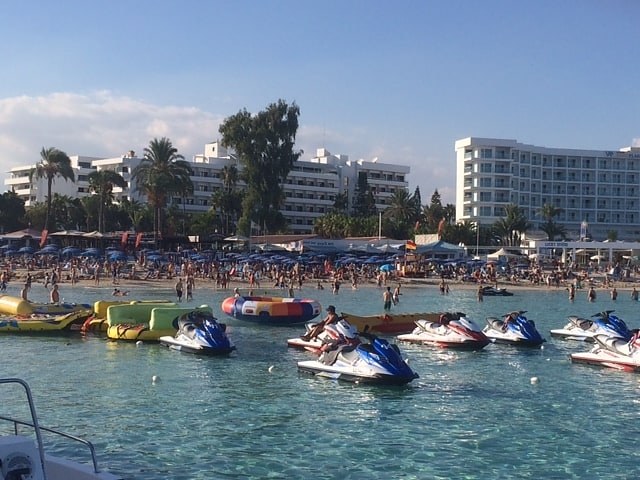
Beach in Cyprus. Nissi Beach is a popular beach in the resort of Ayia Napa, Cyprus.
The beach stretches for 500 metres and the water is clean enough for the beach to have been awarded the blue flag designation. The beach, which runs the length of its own cove, takes its name from the small islet of Nissi (Greek: Νησί) located close to the coast. The uninhabited islet can be easily reached on foot through the shallow waters and its location provides a good shelter for the rest of the beach. The islet is covered with low-level local vegetation.
Nissi Beach has become a popular destination for clubbers following live programs transmitted through BBC's Radio 1 Roadshow during the summer tourist season since 2002. Nissi Bay Beach Bar is very popular with locals and tourists alike, playing music throughout the day and organizing events such as foam parties and catwalks with guest DJs. Water sports such as water-skiing and windsurfing are available. There are also two beach volleyball courts open to the public.
In 2005, archaeological excavations along the western borders of the bay revealed evidence of fire-lighting equipment dating back 12,000 years, indicating that the area could have been settled by the first humans on the island.[19]
Thalassa the municipal museum of the sea, Ayia Napa

Specialty museum, Museum
Address: Krio Nero Avenue 14, 5345 Ayia Napa